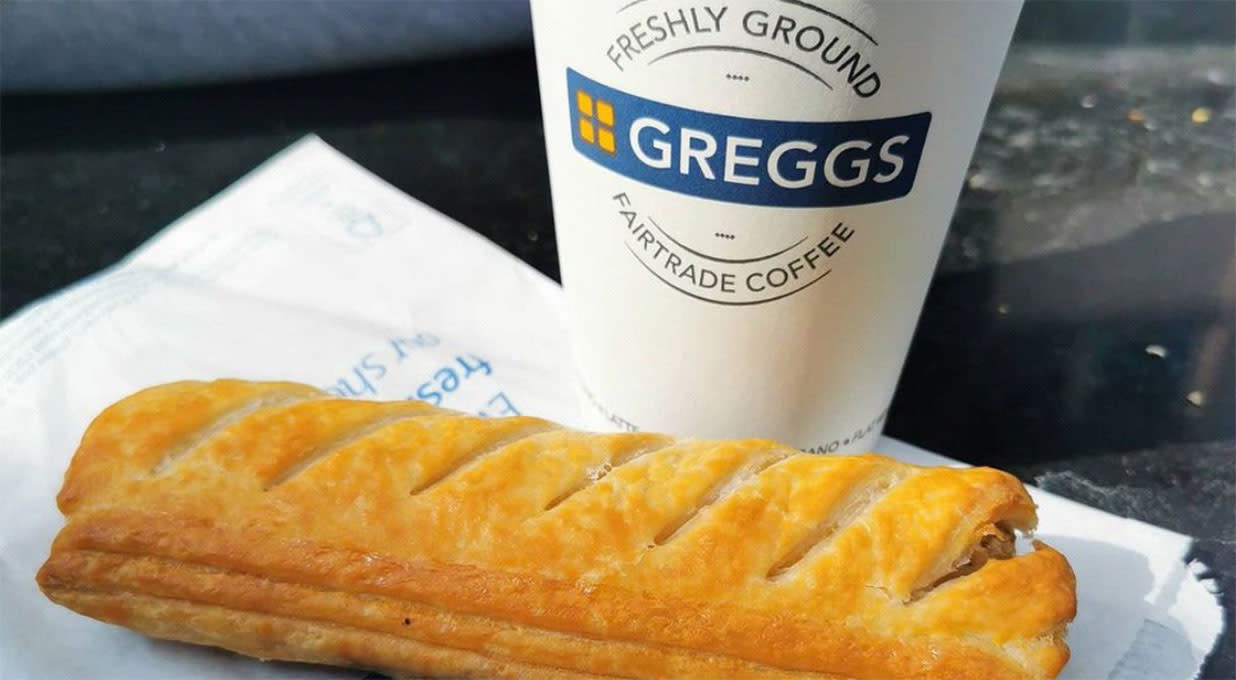Greggs reported like-for-like sales growth of 7.4% over the first 19 weeks, to £693mn. That was driven by improving delivery options, longer opening hours and increased use of the Greggs app.
The store estate rose by 27 over the period, taking the total to 2,500. Management remains confident in delivering its target of 140-160 net openings this year.
Cost inflation is still expected around 4-5% for the year.
The shares were broadly flat in early trading.
Our view
Greggs is doing what it needs to. Like-for-like sales growth of 7.4% in the first 19 weeks of 2024 does reflect a slight slowdown from the start of the year, but nothing for investors to worry about. Management called out a tough trading environment with reduced footfall, probably a product of the horrendously wet conditions plaguing the UK in the early parts of the year.
The number of shops is set to rise to 3,000 over the next few years, the menus and stores have been reset, and market share is at an all-time high. Relying on high-street shoppers and commuter traffic isn't sustainable, so we're particularly supportive of plans to increase its presence at travel locations (like train stations and airports).
Greggs has worked hard over the last few years to increase the number of franchised shops to around 20%. We're supportive of this model. Compared to the company-owned sites, these locations aren't on the hook for day-to-day costs. There are other growth levers, too, including bolstering delivery services (it now partners with both Just Eat and Uber Eats), click-and-collect, and opening later to attract more evening customers.
There's a real opportunity at hand, and they are doing all the right things. The evening food-to-go market is huge and an area Greggs has barely scraped the surface of. Just under half of Greggs shops now serve until 7 p.m. or later, and with new hot food being trialled this year, they’re giving customers more reason to visit them throughout the day.
One of Greggs' key strengths is that it's a lower-value treat. That makes it more resilient during spells when incomes are being flexed. Leaning into that through the loyalty app, which doubled in users in 2023, Greggs has gained another valuable avenue to drive sales growth. That could translate to longer-term repeat demand even when the economy smooths back out.
Inflated costs are starting to ease and the group's secured good forward cover for food, packaging and energy costs - cost visibility in this environment is key. Less pressure on costs makes it easier to keep prices in check and retain that coveted value offering.
We continue to be impressed with cash generation and the decent cash hoard on the balance sheet. This should provide the firepower needed to fund the supply chain and store upgrades planned over the next few years. Perhaps surprisingly for a business geared to growth, there's also a 2.5% prospective yield, and the board recently signed off on a special dividend, too. However, no returns are guaranteed.
There's a lot to like about Greggs, literally and corporately, and we still see some upside over the long term. But a high bar's been set.
Environmental, Social and governance (ESG) risk
Consumer services companies are medium-risk in terms of ESG, and very few companies are excelling at managing them. That leaves plenty of opportunity for forward-thinking firms. The primary risk-driver is product governance. The impact of their products on society, labour relations and environmental concerns are also key risks to monitor.
According to Sustainalytics, Greggs’ management of material ESG issues is average.
Greggs’ overall ESG reporting is not up to par with leading reporting standards, though it has appointed a board-level responsibility for overseeing ESG issues. A very strong environmental policy and a decent whistleblower programme are in place. Executive-level compensation could benefit from some elements being explicitly linked to sustainability performance targets.
Greggs key facts
All ratios are sourced from Refinitiv, based on previous day’s closing values. Please remember yields are variable and not a reliable indicator of future income. Keep in mind key figures shouldn’t be looked at on their own – it’s important to understand the big picture.
This article is not advice or a recommendation to buy, sell or hold any investment.No view is given on the present or future value or price of any investment, and investors should form their own view on any proposed investment.This article has not been prepared in accordance with legal requirements designed to promote the independence of investment research and is considered a marketing communication.Non - independent research is not subject to FCA rules prohibiting dealing ahead of research, however HL has put controls in place(including dealing restrictions, physical and information barriers) to manage potential conflicts of interest presented by such dealing.Please see our full non - independent research disclosure for more information.


